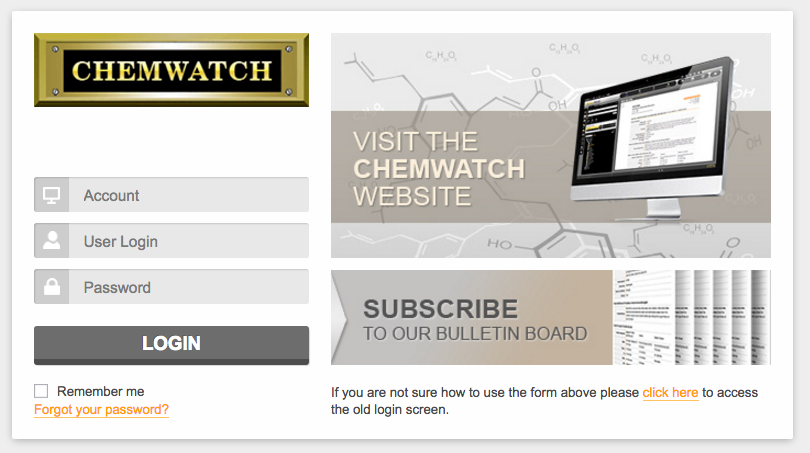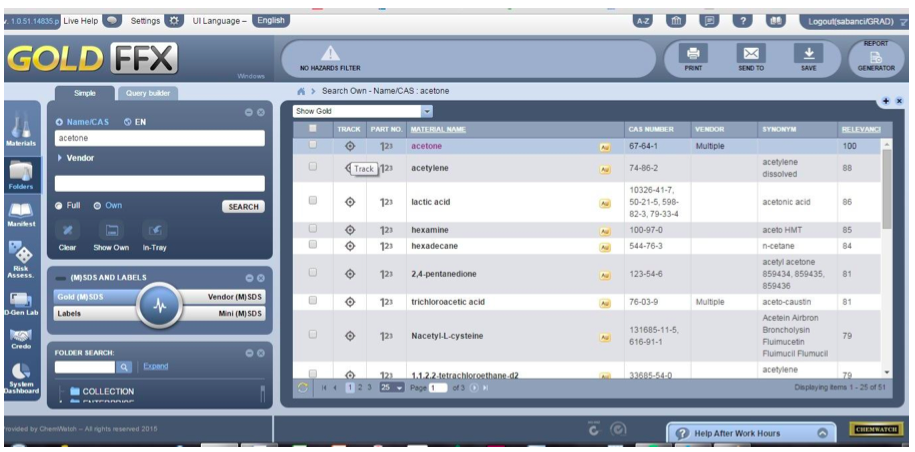Safety data sheet (SDS) contains important data about physical and chemical properties of a particular substance along with health and safety measures. It provides lab users and emergency personnel with procedures for safe handling and working with chemicals particularly on storage, disposal, necessary protective equipment, spill handling and include relevant information on physical data such as melting point, boiling point, flash point along with health measures including toxicity, health effects, first aid, reactivity. A safety data sheet may not always be the sole source in selecting appropriate safety precautions in the laboratory. Therefore, if you have questions about handling, or protecting yourself from, a particular chemical after you review the SDS, contact your supervisor or LS/LSS.
What is a Safety Data Sheet?
The globally harmonized system of classification and labelling of chemicals (GHS) is an international system created by the United Nations that defines and classifies the chemicals with respect to their hazards and puts labelling and classification standards to be consistent used internationally. As a part of GHS, SDS is a written document produced by the chemical manufacturer or importer that includes communication of the hazards and precautionary information including:
- Identification of substance/mixture and company/distributor
- Identification of hazard
- Information on composition/ingredients
- First aid measures
- Fire-fighting measures
- Accidental release measures
- Storage and handling
- Exposure controls/ personal protection
- Physical and chemical properties
- Stability and reactivity
- Toxicological information
- Ecological information
- Disposal information
- Transport information
- Regulatory information
- Others
Which Substances Do Not Require an SDS?
Following items or chemicals does not require SDS:
- Chemicals that are not considered as “hazardous” by OSHA
- Pesticides
- Laboratory chemicals defined in “Occupational Exposure to Hazardous Chemicals in Laboratories”. (Note: if you work in a laboratory and receive an SDS when a chemical is shipped to you, you are required to retain the SDS and make it available to lab users.)
- Nuisance particulates that do not pose any physical or health hazard
- Ionizing and non ionizing radiation
- Biological hazards
- Drugs in solid, final form for direct administration to the patient (For example, tablets, pills, and capsules.)
- Drugs which are packaged by the chemical manufacturer for sale to consumers in retail establishments or those for personal consumption such as included in first aid cabinets
ChemWatch
Our university provides ChemWatch Gold FFX chemical management system software to access SDS datasheets. ChemWatch is one of the largest supplier system of individual SDS and all related chemical data. It provides a fully managed service to control, assess chemicals and cover risks within laboratory by developing offline and online application software, which uses a global database. Gold FFX application is used in managing hazardous substances and dangerous goods by using a web based database system by means to providing access to SDS, create manifests and conduct task based risk assessments. This application draws from the library of Chemwatch global database system that contains more than 13 million SDS. ChemWatch is available online at:
http://jr.chemwatch.net/chemwatch.web
You must login to the system using your account (Figure 8.1) and password provided by Sabancı University during lab safety training sessions/Chemwatch training.

Once you login, you can search different types of SDS, such as miniSDS, VendorSDS, and Gold SDS (Figure 8.2). The system also allows you to find the places of chemicals you search for.

A detailed training on ChemWatch usage is provided by LSS at the beginning of each semester. For further information regarding Chemwatch please navigate to trainings section/ChemWatch and/or contact LSS. It is highly recommended that you should obtain a copy of the SDS for your chemicals.
Safe Work Practices
General Regulations
- Never eat, drink, or smoke while working in the laboratory.
- Clothing: When handling dangerous substances, wear gloves, laboratory coats, and safety shield or glasses. Shorts and sandals should not be worn in the lab at any time. Steel-toe-shoes are required when working in the machine shops.
- Use the personal protective equipment (e.g. gloves, goggles, dust mask, etc.) as recommended in the SDS.
- Ensure that the SDS for the materials you work with are readily accessible and up-to-date.
- Lab users must receive training in the safe use, handling, disposal and clean-up of hazardous chemicals and products.
- Practice good housekeeping, personal cleanliness and equipment maintenance.
Chemical Storage
- Store chemicals and products in a designated area.
- When storing chemicals side by side make sure they are compatible and will not react to produce a hazardous chemical reaction.
- Ensure that portable containers are properly labelled with a workplace label when a controlled product is decanted from the supplier’s original container.
- Replace defaced or accidently removed supplier or workplace labels.
- Close caps and lids tightly before storing any container.
- Store only the products you require and quantities you need.
- Limit access to storage areas and the janitorial closet.
Chemical Handling
- Handle containers safely to avoid damaging them.
- Do not mix chemicals and cleaning products unless you have consulted the SDS and are sure that it is safe (e.g. mixing ammonia and bleach will produce a highly toxic gas).
- Do not use the contents of unlabelled containers.
- Do not leave open containers of flammable products such as paintbrush cleaner, varnish, etc.
- Do not dispose of flammable materials in the trash.
- Do not smoke, eat or drink while using chemicals.
- Do not reuse empty containers; the residue may be hazardous.
- Do not open a container that appears to be swollen.
- Out-dated controlled products should be disposed of in a timely and appropriate manner.
Emergency
- Know how to handle emergencies (e.g. fire, spill, personal injury, etc) and the appropriate first aid measures (i.e. for eye contact, skin contact, ingestion, inhalation, etc.).
- Know where the closest eye/face wash station and/or emergence shower are located, and how to use them. Emergency equipment should be inspected and tested on a regular basis.
- Be aware of the potential hazards (e.g. fire/explosion, health, chemical reactivity, etc.) for the materials you work with.
- Report all incidents/accidents and chemical spills to your supervisor, LS/LSS.
- Follow the recommended clean-up procedures in case of a spill.
References and sources for information from the relevant websites and documentation of different universities, NGOs and government agencies used in the preparation of this website are provided at references.